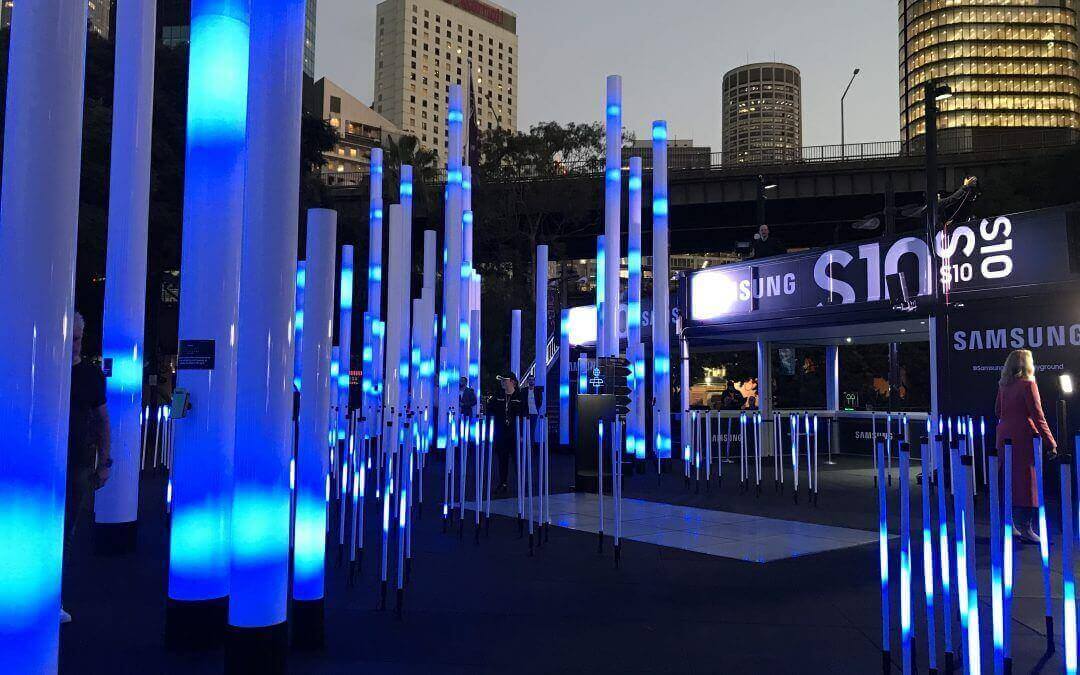Table of Contents
Experiential marketing continues to evolve, offering innovative ways for brands to connect with their audiences. As we step into 2025, new trends are shaping how businesses create memorable, engaging, and impactful experiences. Here are the top five experiential marketing trends to watch this year.
1. Sustainability as the Core of Experiences
Sustainability is no longer optional—it’s essential. Audiences are increasingly drawn to brands that prioritise eco-friendly initiatives in their campaigns. From reducing waste at events to utilising renewable energy, sustainable practices resonate deeply with environmentally conscious consumers.
Brands are leveraging this trend by hosting carbon-neutral events and offering interactive installations that educate and inspire attendees about sustainability.
For Example:
The Hotel School (THS) prepares future hospitality leaders by offering hands-on experiences that bring sustainability to the forefront of their education. Through immersive field trips, students visited leading eco-conscious businesses, including Park Royal Collection, Kitchen by Mike, OzHarvest, Crystalbrook Vincent, Howard Smith Wharves, and Taronga Zoo. These visits showcased impactful practices such as zero-waste cooking, energy-efficient design, and the use of locally sourced ingredients. At Kitchen by Mike, students saw 1005 biodegradable packaging and homegrown produce, while OzHarvest’s zero-waste cooking class underscored the importance of reducing food waste. Crystalbrook Collection demonstrated how sustainable hospitality can redefine luxury with waste-free amenities and recycled materials. These experiences enhanced students’ understanding of sustainability and illustrated how it can drive innovation, strengthen brand image, and benefit the planet, inspiring them to lead meaningful change in the industry.
2. Seamless Integration of AR and VR
Technology is taking experiential marketing to new heights. Augmented Reality (AR) and Virtual Reality (VR) are providing immersive experiences that captivate audiences. These technologies allow consumers to step into virtual environments where they can explore products, interact with brand stories, and even co-create experiences.
For Example:
Coca-Cola Zero Sugar’s innovative #TakeATaste Now campaign is a groundbreaking augmented reality (AR) that invites UK consumers to experience the brand in a highly interactive and gamified way. The campaign features real-time, two-way AR experiences where consumers can scan QR codes on OOH screens to receive a digital bottle of Coca-Cola Zero Sugar, including its Cherry variant. This voucher can be redeemed in Tesco stores for a real bottle, with additional rewards through the Coca-Cola app, such as gamers’ points for entry into large giveaways. The campaign is live across 850 digital formats, including major locations like Piccadilly Lights in London, and is amplified by influencer partnerships on Instagram. By leveraging real-time interactivity and gamification, Coca-Cola enhances consumer engagement while promoting the “Best Coke Ever?” platform, which encourages trial among those seeking zero-calorie, great-tasting beverages.
Source: Mobile Marketing and Advertising
3. Data-Driven Personalisation
The era of generic campaigns is over. Personalisation powered by data analytics is transforming experiential marketing. Brands can now curate experiences tailored to individual preferences, creating deeper emotional connections.
From personalised event invitations to customised on-site interactions, brands are finding innovative ways to make each attendee feel valued. Data-driven personalisation ensures that every moment in a campaign resonates on a personal level.
For example:
The largest supermarket group in Denmark utilised advanced customer data analytics to gain a deeper understanding of the customer journey, identifying links between demographic and behavioral data. They discovered that residents of Nørrebro were less likely to purchase outdoor furniture compared to those in suburban Ballerup. With these insights, the group personalised email campaigns based on demographic information, leading to a tripling of their conversion rates. They also created customer profiles by integrating online behavior and data from other systems like SAP, enabling a Single Customer View for more targeted offers. Personalising the homepage of their online store resulted in a €170,000 increase in revenue and a 324% boost in conversion rates. Additionally, their focus on abandoned cart emails led to a 200% increase in conversions and a 100% rise in monthly revenues.
Source: APSIS
4. Hybrid Experiences with Physical and Digital Synergy
Hybrid events have become the norm, combining physical and digital elements to maximise reach and engagement of how brands are making campaigns more inclusive and engaging. This trend ensures that whether in-person or virtual, every attendee feels part of the experience.
5. Purpose-Driven Activations
Consumers are increasingly drawn to brands that stand for something beyond their products. Purpose-driven campaigns that align with social, environmental, or community causes are gaining traction. These initiatives build brand quality and also inspire action among audiences.
Purpose-driven activations include campaigns that support local charities, promote mental health awareness, or advocate for sustainable living. The key is creating experiences that reflect a genuine commitment to meaningful causes.
For Example:
Adidas is making sustainability a core part of its mission with the launch of its “How to Think and Act Sustainably” training program for employees. The four-week initiative blends self-guided learning with global peer discussions, encouraging participants to adopt sustainable practices in their personal and professional lives. The program examines sustainability through various perspectives, awareness, and action through creative ideas and practical solutions.
This training reflects Adidas’ broader commitment to environmental responsibility, including its pledge to use only recycled plastic from 2024 and achieve climate-neutral production by 2050. Adidas is leading the charge toward meaningful change and a greener future by promoting a culture of accountability and empowering employees to sustainable practices.
Source: Neuromagic
Elevate Your Campaigns with Innovative Solutions
At Eco Renewable Energy, we empower brands to integrate sustainability and innovation into their experiential marketing campaigns. Our products, Smart Solar Benches, WeWatt Bikes, and Energy Floors, offer unique ways to engage audiences while showcasing your commitment to a better future.
Whether you’re hosting a corporate event or a public activation, our solutions enhance audience interaction, leaving a lasting impression. Stay ahead of the trends and create experiences that inspire and connect.
Conclusion
As we look ahead to 2025, it’s clear that experiential marketing is moving towards more personalised, immersive, and socially responsible experiences. Brands embracing these changes can connect more effectively with their audiences and build lasting loyalty by aligning with their values. By staying updated with these trends, businesses can create experiences that resonate deeper and drive greater engagement. Now is the time to explore new strategies, leverage cutting-edge technologies, and design campaigns that capture attention and make a meaningful impact.


Recent Comments